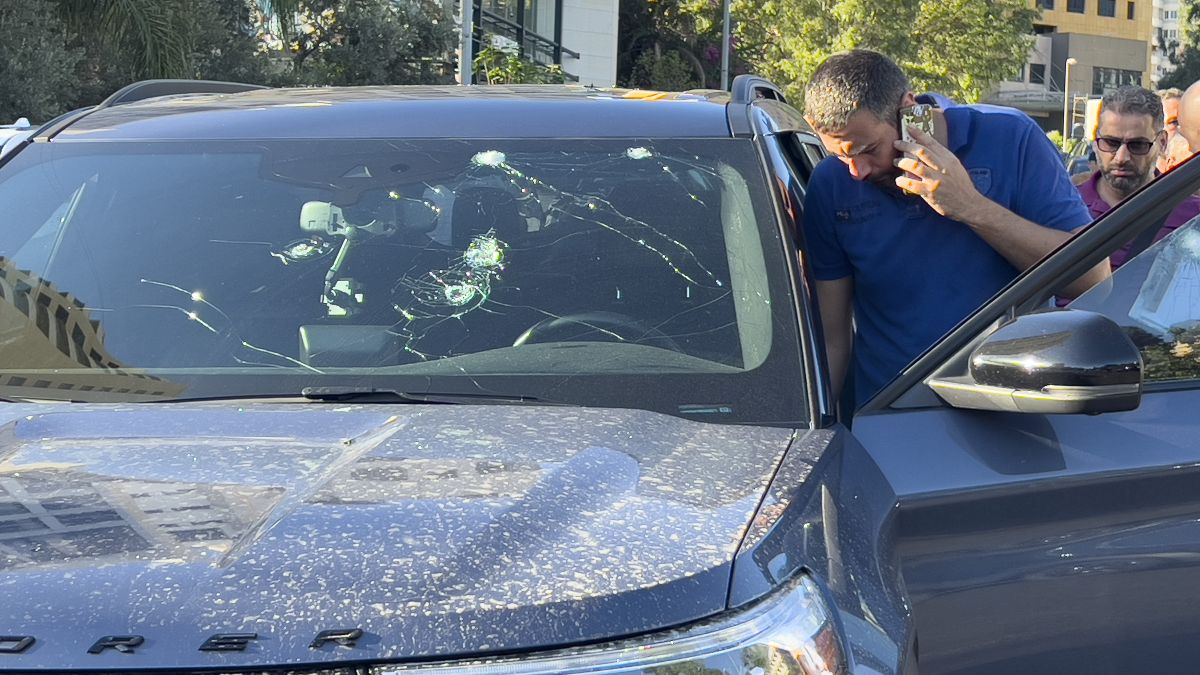Amidst the Israel war in Gaza, there’s been news of missile attacks and audacious assassinations. However, on Tuesday (September 17), at 3.30 pm local time, emerged the most bizarre, but what seems to be the most daring attack — a series of pager explosions across Lebanon, targeting Hezbollah operatives.
Nine people, including a 10-year-old girl , were killed while Lebanon officials put the injured count at 2,750. Those wounded in the attack include Iran’s ambassador to Beirut, Mojtaba Amani.
Shortly after the attack, which led to chaos and panic in Lebanon with people rushing the injured to the hospitals, the Lebanese militant group, Hezbollah , blamed Israel for the explosions, with one official saying it was the biggest security breach for the group in nearly a year of conflict with Israel.
The New York Times has reported that Israel’s spy agency, Mossad, hid explosive material within a new batch of Taiwanese-made pagers imported into Lebanon. Another report said that three grammes of explosive was inserted near the battery of the pager and a switch was also embedded which could be detonated remotely.
Hezbollah has vowed to retaliate against Israel. The group said two of its fighters were among the dead and threatened a “just punishment”. “We hold the Israeli enemy fully responsible for this criminal aggression that also targeted civilians,” a statement said.
Notably, this is not the first time that a communication device — phone, mobile — has been turned into a killer. Here are some infamous instances from the past.
1972: Mahmoud Hamshari
Following the Munich Massacre , in which 11 Israeli athletes were killed at the Munich Olympics in 1972, Mossad drew up a plan, titled Operation Wrath of God, which sought to seek justice for the deaths of the 11 athletes.
As part of the covert programme, they targeted Mahmoud Hamshari, the representative of Palestine Liberation Organisation (PLO) in Paris.
Mossad operatives broke into Hamshari’s residence earlier and planted a bomb in the base of his phone. On December 8, one of the Mossad members, who had posed as a journalist earlier and scheduled a call with him, called up the PLO representative. When Hamshari identified himself, the bomb installed in his telephone was remotely activated. He was killed in the blast instantly.
Zvi Zamir, then chief of the Mossad, was later quoted as saying that the message Israel wanted to send out was — “we shall reach them”.
1996: Yahya Ayyash
Also known as the Engineer, Yahya Ayyash was the chief bomb maker of Hamas in the late 1990s. He was credited for introducing suicide bombings as a terror weapon against Israel. Moreover, the Jewish nation believed him to be the mastermind behind terror attacks since 1992 that claimed at least 60 lives and wounded hundreds.
It is reported that Ayyash was able to fashion explosives out of available household products such as a combination of acetone and detergent.
Owing to his penchant for explosives, he earned the attention of Shin Bet , Israel’s internal security agency.
On January 5, 1996, Ayyash was killed when his mobile phone — a Motorola Alpha brought into Gaza by a Palestinian collaborator — exploded during his weekly phone call to his father. According to reports, Shin Bet had intercepted the call, confirmed his identity, and detonated explosives inside the phone remotely.
Nobody claimed responsibility for Ayyash’s killing. However, Israeli state radio reported his death citing “informed Israeli sources.”
2000: Samih Malabi
In December 2000, Samih Malabi, a Fatah activist from the Kalandia refugee camp outside Ramallah, was killed when a booby-trapped mobile phone exploded next to his head.
While Israel never confirmed if it was them behind the killing, the style was reminiscent of how Shin Bet had taken out Ayyash earlier.
2004: Izz Eldine Subhi Sheik Khalil
On September 27, 2004, 42-year-old Hamas leader Izz Eldine Subhi Sheik Khalil was blown to pieces outside his home in Damascus after a phone-triggered bomb exploded in his car.
According to reports, the car exploded after he received a call on his mobile phone, which triggered the explosive. Police and witnesses said Khalil, who had been speaking on his cellphone, started his white Mitsubishi Jeep and drove 10 yards before it exploded.
The police later said that the bomb had been planted under the driver’s seat.
Sources later said that Israel had carried out the operation in retaliation for a Hamas bus bombing the previous month that killed 16 Israelis.
2024: Hezbollah’s exploding pagers
The latest instance of communication devices turning deadly came on Tuesday when several pagers belonging to Hezbollah members exploded simultaneously across Lebanon and even in Syria. The explosions took place over a period of an hour and CCTV and phone footage available on social media shows how people were going through their daily lives when the detonations took place.
The injured — over 2,500 — were rushed to nearby hospitals, with doctors reporting that many were missing fingers and had facial injuries. Others were bleeding profusely from their upper thighs — near where trouser pockets would normally be — and in some cases from their abdomens.
Analysts are of the opinion that Israel infiltrated a supply chain to cause the simultaneous explosion of hundreds of Hezbollah pagers. Brussels-based military and security analyst Elijah Magnier told AFP, “Israeli intelligence has infiltrated the production process, adding an explosive component and remote triggering mechanism into the pagers without raising suspicion.”
And Charles Lister of the Middle East Institute agrees. “This was more than lithium batteries being forced into override. A small plastic explosive was almost certainly concealed alongside the battery, for remote detonation via a call or page.”
“Mossad infiltrated the supply chain,” he was quoted as telling AFP.
With inputs from agencies
)